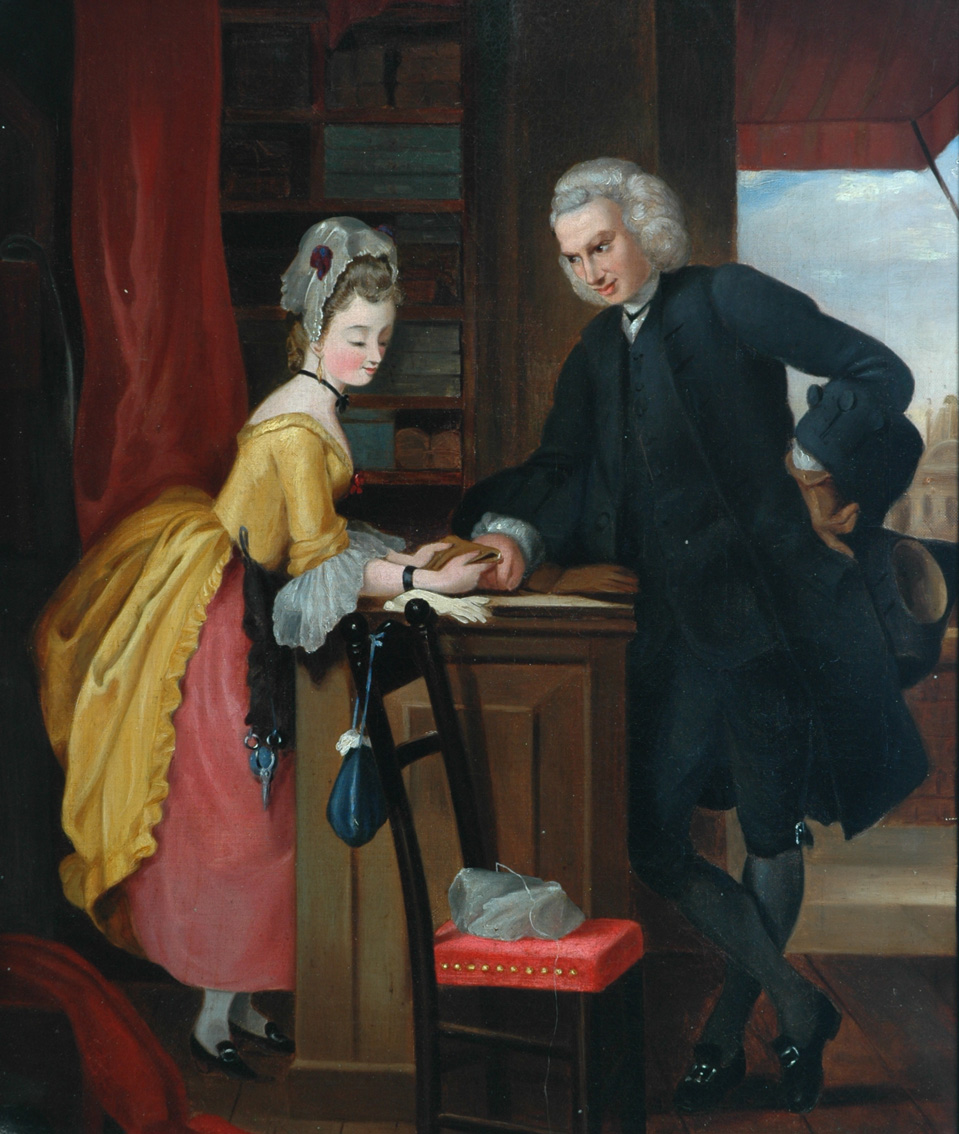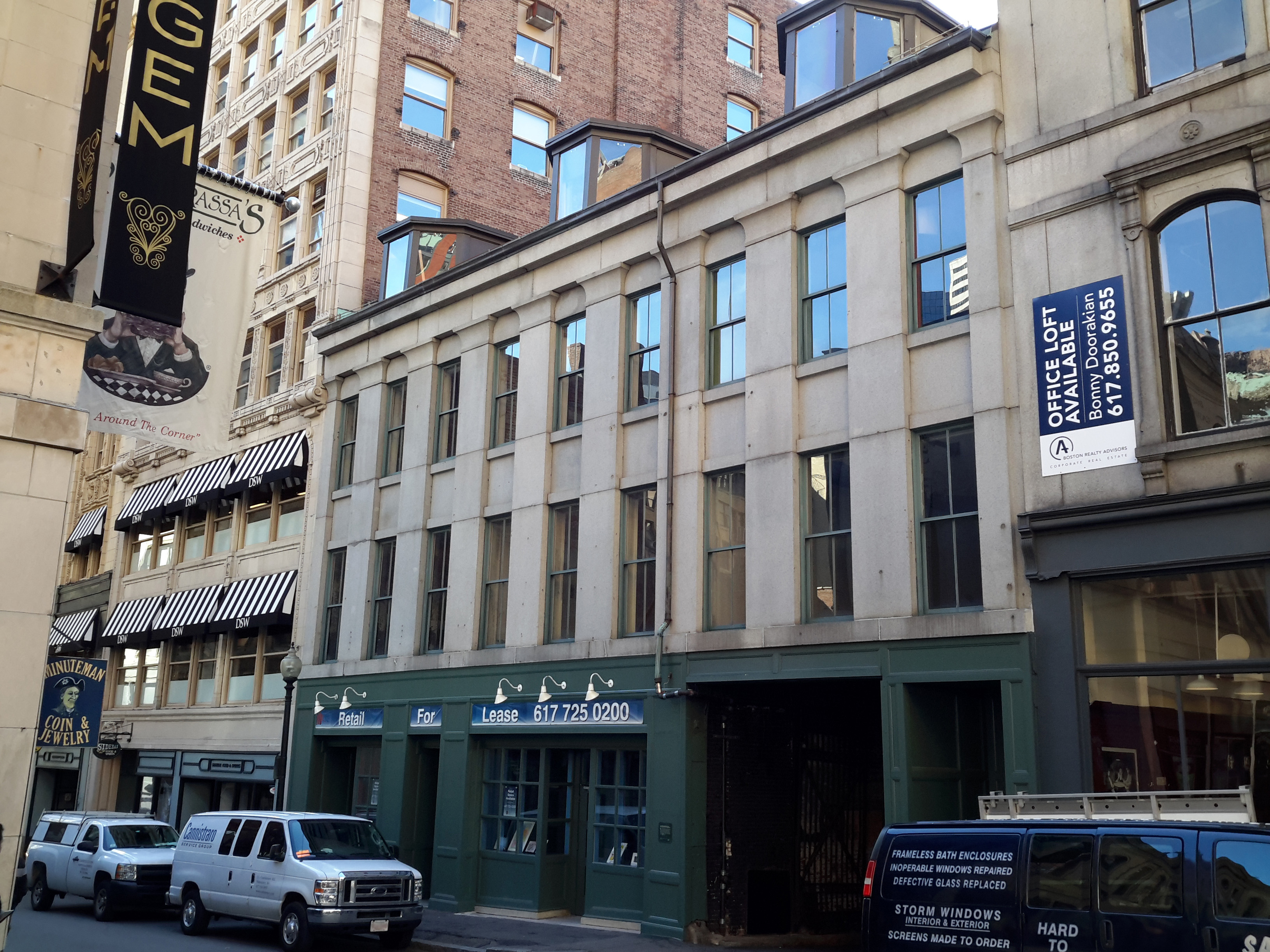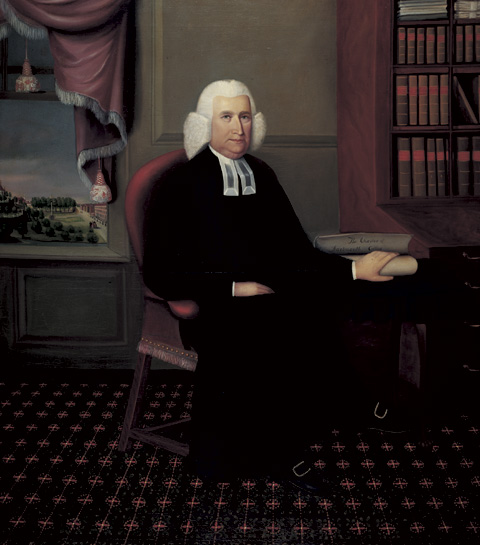|
Samuel Appleton (merchant)
Samuel Appleton (June 22, 1766 – July 12, 1853) was an American merchant and philanthropist, active in New Hampshire, Massachusetts, and Great Britain. Biography Appleton was born in New Ipswich, New Hampshire, the great-great-grandson of another Samuel Appleton (1625 – May 15, 1696), who was a military and government leader in the Massachusetts Bay Colony and Province of Massachusetts Bay and a commander of the Massachusetts militia during King Philip's War who led troops during the Attack on Hatfield, Massachusetts and the Great Swamp Fight and also held numerous positions in government and was an opponent of Governor Sir Edmund Andros. His family had come there from Ipswich, Massachusetts where relatives lived into the present. From 1790 to 1792, he cleared fields in Maine for farming. He also taught school. For a time he kept a store in Ipswich. In 1794, he moved to Boston where he became an importer in partnership with his brother Nathan as S. & N. Appleton, buying Europe ... [...More Info...] [...Related Items...] OR: [Wikipedia] [Google] [Baidu] |
Gilbert Stuart Newton
Gilbert Stuart Newton (2 September 1795 – 5 August 1835) was a British artist. Life Newton was born in Halifax, Nova Scotia, the twelfth child and youngest son of Henry Newton, a customs official, and Ann, his wife, daughter of Gilbert Stuart, snuff manufacturer at Boston, Massachusetts, of Scottish descent, and sister to Gilbert Stuart the portrait painter. His parents left Boston in 1776 as the British withdrew; but on the death of his father in 1803 his mother returned with her family to Charlestown, near Boston. Newton was intended for a commercial career, but was taken on as a pupil by his uncle, Gilbert Stuart. Newton came to Europe with an elder brother, and studied painting at Florence. In 1817 he visited Paris on his way to England and there met Charles Robert Leslie, as well as Washington Allston and David Wilkie. After visiting the Netherlands Newton went with Leslie to London, and entered as a student at the Royal Academy. He revisited America for a short tim ... [...More Info...] [...Related Items...] OR: [Wikipedia] [Google] [Baidu] |
Nathan Appleton
Nathan Appleton (October 6, 1779July 14, 1861) was an American merchant and politician and a member of " The Boston Associates". Early life Appleton was born in New Ipswich, New Hampshire, the son of Isaac Appleton (1731–1806) and his wife Mary Adams (1741–1827). Appleton's father was a church deacon, and Nathan was brought up in the "strictest form of Calvinistic Congregationalism". Appleton was also the cousin of William Appleton (1786–1862) and James Appleton (1785–1862). His paternal grandparents were Elizabeth Sawyer (1709–1785) and Isaac Appleton Jr. (1704–1794), the son of Isaac Appleton (1664–1747), who was the son of Major Samuel Appleton (1625-1696), and Priscilla Baker, granddaughter of Lt. Gov. Samuel Symonds. He was educated in the New Ipswich Academy. He then entered Dartmouth College in 1794, however, that same year he left college to begin mercantile life in Boston, Massachusetts, working for his brother Samuel (1766–1853), a successful and be ... [...More Info...] [...Related Items...] OR: [Wikipedia] [Google] [Baidu] |
Boston Landmarks Commission
The Boston Landmarks Commission (BLC) is the historic preservation agency for the City of Boston. The commission was created by state legislation i1975 History Urban renewal in the United States started with the Housing Act of 1949, part of President Harry Truman's Fair Deal. In Boston, almost a third of the old city was demolished, including the historic West End, to make way for a new highway, low- and moderate-income high-rises, and new government and commercial buildings. The Boston Landmarks Commission was created by legislation in 1975 as a response to the mass demolitions, particularly the demolition of the Jordan Marsh Building on Washington Street. Built in the 1860s, the ornate building featured a well-known corner clock tower designed by Nathaniel J. Bradlee. Along with an entire row of annex buildings, the building was torn down in 1975 and replaced by a new building. Public outrage and grass roots protests influenced preservation legislation and sparked preservation a ... [...More Info...] [...Related Items...] OR: [Wikipedia] [Google] [Baidu] |
Boston Landmark
A Boston Landmark is a designation by the Boston Landmarks Commission for historic buildings and sites throughout the city of Boston based on the grounds that it has historical, social, cultural, architectural or aesthetic significance to New England or the United States. While National Historic Landmark, National Landmark or National Register status can provide tax incentives for the owner of an income-producing property, local landmark status provides more control over modifications to a designated historic structure or place. Criteria For a group to start a designation procedure, they first meet with Boston Landmarks Commission staff to discuss the petition process. Once a complete petition is submitted, a preliminary hearing is scheduled to determine if the Commission will accept the petition for further study. If the Commission accepts the petition, the building or site is added to the pending Landmarks list. Preparation of a study report on the proposed Landmark is the next st ... [...More Info...] [...Related Items...] OR: [Wikipedia] [Google] [Baidu] |
King's Chapel
King's Chapel is an American independent christianity, Christian unitarianism, unitarian congregation affiliated with the Unitarian Universalist Association that is "unitarian Christian in theology, anglicanism, Anglican in worship, and congregationalist polity, congregational in governance." It is housed in what was for a time after the Revolution called the "Stone Chapel", an 18th-century structure at the corner of Tremont Street and School Street in Boston, Massachusetts. The chapel building, completed in 1754, is one of the finest designs of the noted colonial architect Peter Harrison (architect), Peter Harrison, and was designated a National Historic Landmark in 1960 for its architectural significance. Despite its name, the adjacent King's Chapel Burying Ground is not affiliated with the chapel or any other church; it pre-dates the present church by over a century. History The King's Chapel congregation was founded by Colonial government in the Thirteen Colonies, Royal ... [...More Info...] [...Related Items...] OR: [Wikipedia] [Google] [Baidu] |
Vestryman
A vestryman is a member of his local church's vestry, or leading body.Anstice, Henry (1914). ''What Every Warden and Vestryman Should Know.'' Church literature press He is not a member of the clergy.Potter, Henry Codman (1890). ''The Offices of Warden and Vestryman.'' James Pott & Co. History In England especially, but also in other parts of the United Kingdom, parish councils have long been a level of local government rather than being solely ecclesiastical in nature. This probably arises from the role of the Church of England as the established church and the Parish (or area served by an individual church) as the most local and immediate level of social involvement. As these councils often met in the vestry of the local church, either for convenience or because there were no other suitable rooms available, the name became associated with the council and in some places (e.g. Camberwell in London) identified it. A Vestry may also have had the role of supervising local (Parish) ... [...More Info...] [...Related Items...] OR: [Wikipedia] [Google] [Baidu] |
Dartmouth College
Dartmouth College (; ) is a private research university in Hanover, New Hampshire. Established in 1769 by Eleazar Wheelock, it is one of the nine colonial colleges chartered before the American Revolution. Although founded to educate Native Americans in Christian theology and the English way of life, the university primarily trained Congregationalist ministers during its early history before it gradually secularized, emerging at the turn of the 20th century from relative obscurity into national prominence. It is a member of the Ivy League. Following a liberal arts curriculum, Dartmouth provides undergraduate instruction in 40 academic departments and interdisciplinary programs, including 60 majors in the humanities, social sciences, natural sciences, and engineering, and enables students to design specialized concentrations or engage in dual degree programs. In addition to the undergraduate faculty of arts and sciences, Dartmouth has four professional and graduate schools: ... [...More Info...] [...Related Items...] OR: [Wikipedia] [Google] [Baidu] |
Harvard University
Harvard University is a private Ivy League research university in Cambridge, Massachusetts. Founded in 1636 as Harvard College and named for its first benefactor, the Puritan clergyman John Harvard, it is the oldest institution of higher learning in the United States and one of the most prestigious and highly ranked universities in the world. The university is composed of ten academic faculties plus Harvard Radcliffe Institute. The Faculty of Arts and Sciences offers study in a wide range of undergraduate and graduate academic disciplines, and other faculties offer only graduate degrees, including professional degrees. Harvard has three main campuses: the Cambridge campus centered on Harvard Yard; an adjoining campus immediately across Charles River in the Allston neighborhood of Boston; and the medical campus in Boston's Longwood Medical Area. Harvard's endowment is valued at $50.9 billion, making it the wealthiest academic institution in the world. Endowment inco ... [...More Info...] [...Related Items...] OR: [Wikipedia] [Google] [Baidu] |
Memorial Church Of Harvard University
The Memorial Church of Harvard University is a building on the campus of Harvard University. It is an inter-denominational Protestant church. History Predecessors The first distinct building for worship at Harvard University was Holden Chapel, built in 1744. The college soon outgrew the building, which was replaced by a chapel inside Harvard Hall in 1766, then a chapel in University Hall in 1814, and finally by Appleton Chapel, a building dedicated solely to worship sited where Memorial Church now stands. Standing for 73 years before the current building, Appleton Chapel was home to religious life at Harvard until 1932. Its namesake is preserved inside Memorial Church, as the Appleton Chapel portion of the main building houses the daily service of Morning Prayer. When Appleton Chapel was built in 1858 thanks to the generosity of Samuel Appleton, Morning Prayer attendance was compulsory. When attendance became voluntary in 1886, the college was left with a building that had beco ... [...More Info...] [...Related Items...] OR: [Wikipedia] [Google] [Baidu] |
Hitchcock Ichnological Cabinet
The Hitchcock Ichnological Cabinet is a collection of fossil footmarks assembled between 1836 and 1865 by Edward Hitchcock (1793–1864), noted American geologist, state geologist of Massachusetts, United States, and President of Amherst College. He was one of the first experts in fossil tracks. A footmark impression in stone is a petrosomatoglyph. Begun when the science of ichnology (the study of tracks) was in its infancy, and the word dinosaur had not been coined yet, the collection was made chiefly from the fossils of the Connecticut River Valley (Connecticut River Valley trackways). By 1875 this collection consisted of 21,773 tracks representing 120 species. It is the world's largest collection of dinosaur tracks. Starting in 1855, the collection was located in the lower level of Appleton Cabinet on the Amherst College campus. It has subsequently been twice relocated, and can now be found in the Amherst College Museum of Natural History. See also * Amherst College Mus ... [...More Info...] [...Related Items...] OR: [Wikipedia] [Google] [Baidu] |
Amherst College
Amherst College ( ) is a private liberal arts college in Amherst, Massachusetts. Founded in 1821 as an attempt to relocate Williams College by its then-president Zephaniah Swift Moore, Amherst is the third oldest institution of higher education in Massachusetts. The institution was named after the town, which in turn had been named after Jeffery, Lord Amherst, Commander-in-Chief of British forces of North America during the French and Indian War. Originally established as a men's college, Amherst became coeducational in 1975. Amherst is an exclusively undergraduate four-year institution; 1,971 students were enrolled in fall 2021. Admissions is highly selective, and it frequently ranks at or near the top in most rankings of liberal arts schools. Students choose courses from 41 major programs in an open curriculum and are not required to study a core curriculum or fulfill any distribution requirements; students may also design their own interdisciplinary major. Amherst competes ... [...More Info...] [...Related Items...] OR: [Wikipedia] [Google] [Baidu] |
Mount Auburn Cemetery - Samuel Appleton Tomb
Mount is often used as part of the name of specific mountains, e.g. Mount Everest. Mount or Mounts may also refer to: Places * Mount, Cornwall, a village in Warleggan parish, England * Mount, Perranzabuloe, a hamlet in Perranzabuloe parish, Cornwall, England * Mounts, Indiana, a community in Gibson County, Indiana, United States People * Mount (surname) * William L. Mounts (1862–1929), American lawyer and politician Computing and software * Mount (computing), the process of making a file system accessible * Mount (Unix), the utility in Unix-like operating systems which mounts file systems Displays and equipment * Mount, a fixed point for attaching equipment, such as a hardpoint on an airframe * Mounting board, in picture framing * Mount, a hanging scroll for mounting paintings * Mount, to display an item on a heavy backing such as foamcore, e.g.: ** To pin a biological specimen, on a heavy backing in a stretched stable position for ease of dissection or display ** To p ... [...More Info...] [...Related Items...] OR: [Wikipedia] [Google] [Baidu] |
_&_Josiah_Johnson_Hawes_(1808-1901).jpg)






%2C_1825-1903.jpg)
